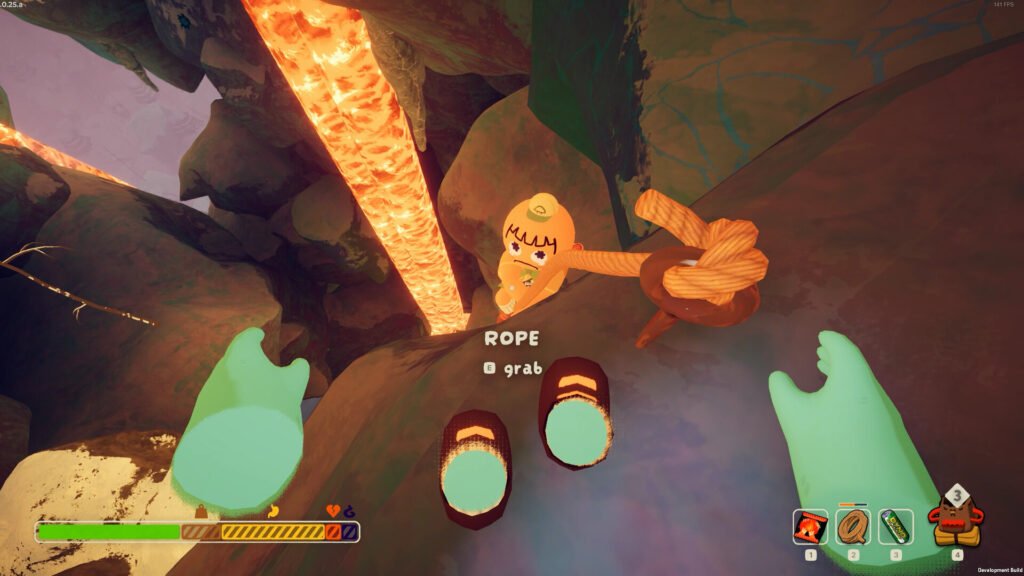In PEAK, what you carry is something that can make or break you. When you fail to pack adequately, you might regret it during a crucial a battle. Then again, if you carry too much load, your movement gets really slow. The top players know this balance, and that is where intelligent packing comes in.

1. Prioritize Flexible Weight Ranges
Rather than constantly pressing your weight to the maximum, you should aim to maintain a range of around 85 to 90 percent of the maximum weight capacity. In my experience, this provides room to grab more critical things later without leaning over into the burdened state, where your character slows down and has increased stamina loss.
When you’re around 80%, that’s usually a good time to start throwing out things that don’t really matter as much. Doing this early means you’ll be ready when good loot comes along later.
2. Divide Your Gear into Tiers: 60/30/10
Organizing inventory by usefulness makes it easier to decide what to keep.
- Tier A (Must-Have): Healing, grapple tools, and route-specific gear.
- Tier B (Useful): Ammo, food, buffs, depending on what you’re anticipating.
- Tier C (Optional): Craft materials, salvage trash, and everything that isn’t useful in the moment.
Maintain 60% Tier A, 30% Tier B, and only 10% for Tier C. This way you’ll never lack the important things, and the remainder won’t hold you back as much.
This is a practical method and useful when you must make fast decisions about what to drop.
3. Use Stash Spots and Drop Smarter
The stash points in the field in PEAK aren’t for show, they’re designed to assist you in managing what you carry.
- If it’s Tier C or extremely heavy, drop it in a stash crate and return later.
- Split heavy piles of items before you get overwhelmed. Spilling little quantities first enables you to ascend or travel quicker, and you can go back for it if the path comes full circle.
- Numerous players overlook utilising stashing, yet it is a tremendous explanation for experts having the capacity to proceed without getting out of breath half-way up a slope.
4. Recognise When You’re Being Penalised
When you reach the weight limit, stamina regen penalties kick in and movement begins to degrade. It’s not always clear-cut until your character begins moving slowly. It’s wiser to dispose of gear or hoard once you see penalties, instead of continuing to push through wastefully.
5. Plan Gear Based on Route
- Various regions of the map require various types of gear.
- If you’re ascending to mountain regions, you require a light build, grappling equipment, and mobility equipment.
- In flatter areas or valleys, you can have the luxury of carrying more massive gear and materials for crafting or trading.
- With several saved loadouts, such as one for wandering and another for transporting, you can transition playstyles halfway through a run through using in-game presets or manual switch-ups.

6. Mix Functions, Discard Extras
- When selecting gear, opt for things that do multiple jobs.
- A grappling hook with increased sprint time, for instance, is better than taking those two individually.
- Sort by weight in-game to test which items are excessively heavy for what they provide. It’s usually better to cut the five heaviest pieces of gear that don’t do much for the run.
Consider it filtering your build. You don’t need to carry something that’s heavy and low-value, particularly not in high-risk areas.With proper gear management, you can even get to the top without using the popular rope cannon – check our guide here for how to plan for this climbing challenge.
Checklist for Inventory Success
- Keep between 80–90% weight range
- Always have Tier A gear included
- Cache Tier C junk before penalties kick in
- Adjust inventory for a particular terrain
- Sort gear by weight and purpose regularly
Winning PEAK isn’t just about combat skills or climbing speed. It’s about moving efficiently, and that starts with what you wear. By managing your load intelligently, stashing effectively, and tuning gear according to route types, you’re setting yourself up best to press on without exhausting yourself. Be light. Be ready. That’s what the pros do.

